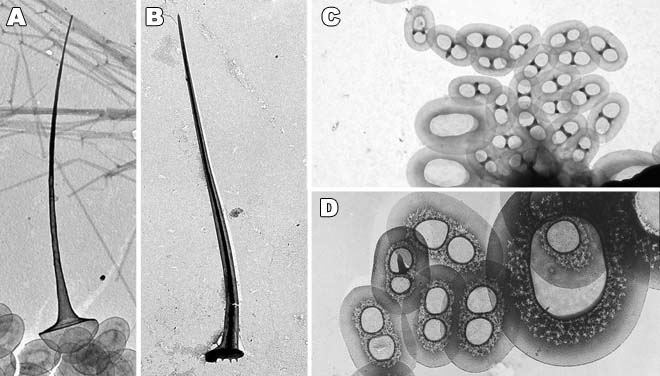Cells are free-swimming, solitary, spherical to ovoid in shape, with a single plastid, covered with siliceous scales and spines. Two flagella of unequal length are inserted apically. Except for the presence of scales and spines, cells closely resemble those of Ochromonas.
Identification of Spiniferomonas species is based on the ultrastructure of scales and spines. Scales are elliptical to oval or circular and variously patterned with ridges, lacunae and rods; in some species, cells are covered by two or three different types of scales. Spines are tubular or triangular in cross section, with a flared funnel- or disc-shaped base and a shaft tapering to a pointed apex. Spine base is simple, without double disc, septa and holes as in the genus Chrysosphaerella. Terminal half of the shaft is sometimes bent, flaring outwards and forming up to four apices.
Marine and brackish Spiniferomonas species were transferred to the Cercozoan genus Thaumatomastix. Solitary species of Chrysosphaerella resemble species of Spiniferomonas and have sometimes been incorrectly added to this genus because of their unicellular habit.
 |
| Spiniferomonas siliceous structures. A. Tubular spine with a flared funnel-shaped base (S. bourrellyi). B. Triangular spine with a disc-shaped, serrated base (S. serrata). C. Elliptical scales of two types, the smaller ones patterned by two rods between the two lacunae (S. cornuta). D. Spiniferomonas scales patterned with irregular ornamentation (S. serrata). |
